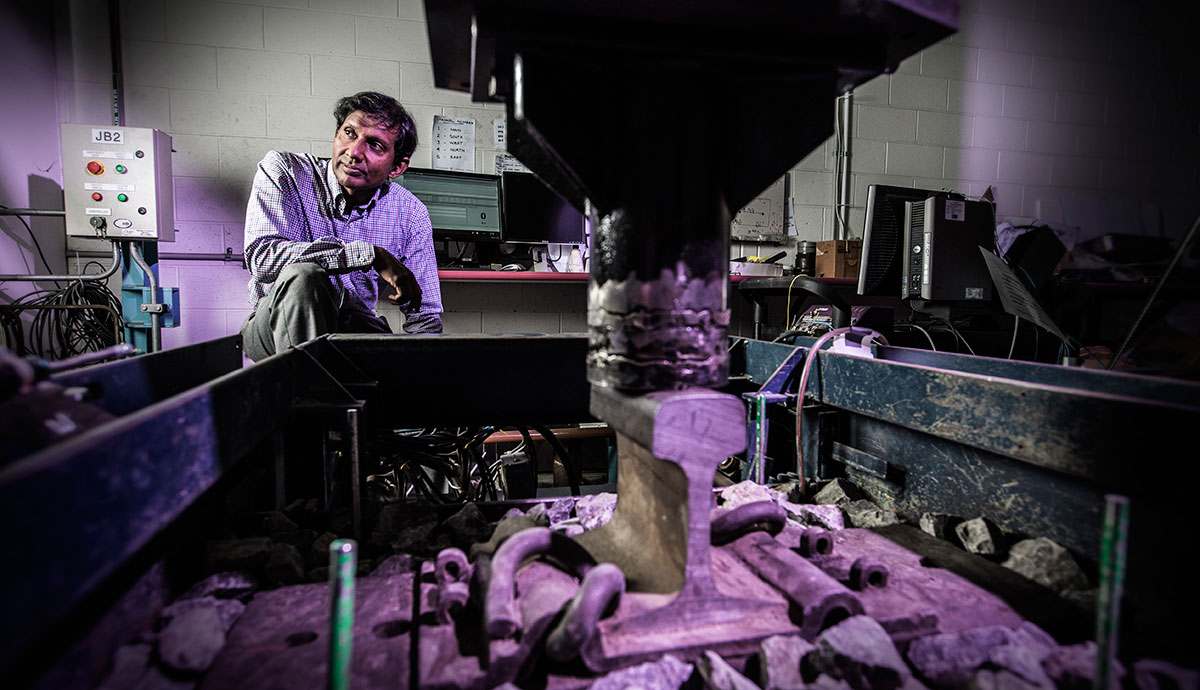June 4, 2015
Vital track research gains international recognition
Australian coastal soft clays pose significant construction challenges for rapidly-expanding urban transportation infrastructure such as railways.
This has triggered a search for innovative ground improvement techniques as a research and development priority in light of the use of considerably heavier and faster trains.
Helping to lead the country in this research is an engineering team from the University of Wollongong who recently was acknowledged for its efforts by winning an internationally recognised award which will be presented to the successful team in London this October.
In 1834 Scottish civil engineer and the Institution of Civil Engineer’s (ICE) first President (1820-1834), Thomas Telford died leaving a legacy and in his will his entire library of technical works to the ICE. Thomas Telford Awards for outstanding journal publications were named after him.
Every year the best paper in each category of all fields of civil engineering that makes an outstanding contribution to the respective fields as identified by the theme of the journals is recognised by the Thomas Telford Premium Award.
UOW’s winning paper published in the ICE’s Ground Improvement Journal, ‘Performance Assessment of Reinforced Ballasted Rail Track, was authored by Professor Buddhima Indraratna, Dr Sanjay Nimbalkar and Senior Geotechnical Engineer from the Australian Rail Track Corporation, Tim Neville.
Professor Indraratna is the foundation Director of the Centre for Geomechanics and Railway Engineering in the Faculty of Engineering and Information Sciences (EIS). On the international scene, Professor Indraratna will also deliver the First Proctor Lecture in Portugal next year during the International Transportation Geotechnics Conference in recognition of his major contributions to transport infrastructure research and development.
He has dedicated two decades of research on the way modern rail and road transport embankments are designed and built.
Through more than 550 peer-reviewed scholarly articles and nine academic books, Professor Indraratna has been instrumental in changing industry practices, including revisions to some Australian and International Standards for improving road embankments and railways.
Professor Indraratna’s research-driven innovations that have been used to improve industry practices include the development of a landfill comprising recycled materials for reclamation work at Port Kembla, now one of the busiest commercial harbours in New South Wales.
He has also pioneered the development of prefabricated vertical drains to rapidly drain soft soils to prevent water pressure build up and improve rail track stability, as well as developing design software for rail tracks.
In this ICE paper, the use of artificial inclusions such as polymeric geosynthetics and energy-absorbing shock mats were outlined as a suitable alternative for reducing unacceptable track degradation and for ensuring sustainable track alignment.
An extensive monitoring program was undertaken on fully-instrumented track sections constructed near Singleton in NSW, where various performance monitoring accessories were cast in-house at the Engineering Workshop and assembled on site.
Four types of geosynthetics were installed at the ballast-capping interface of track sections located on different types of subgrades.
Professor Indraratna said it was found that geogrids could decrease the vertical settlement of the ballast layer with the obvious benefits of improved track stability and decreased cost of maintenance.
“It was also found that the effectiveness of reinforcing geogrids is even greater when the subgrade is soft,” he said.
In recognition of his efforts towards rail innovations, Professor Indraratna has also been awarded the EH Davis Memorial lecture (2010), Chandra S. Desai Medal (2014), Eurasian University Medal (2012), the Engineers Australia Transport Medal (2011), and 2009 Business-Higher Education Round Table award sponsored by the Australian Commonwealth, among others.
